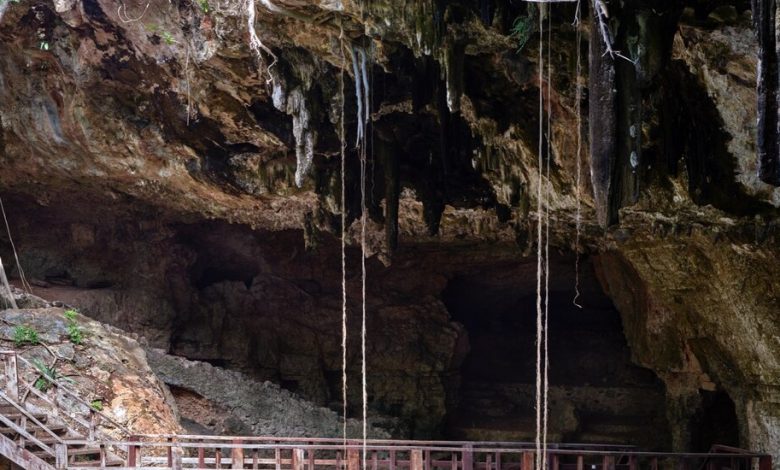A New Train Is Opening Up the Yucatán, for Better or Worse

El Tren Maya, which links five states in southern Mexico, is one of the country’s most-debated infrastructure projects. Carved through the Yucatán Peninsula at great expense, the 966-mile loop pits the megaproject ambitions of Mexico’s departing president, Andrés Manuel López Obrador, against the will of environmentalists and Indigenous leaders seeking to preserve a pristine environment of jaguars, ancient ruins and sacred underwater caves.
The route, which partly opened in December and is expected to be in full service this year, includes a stop at Cancún International Airport, the second-busiest airport in Mexico and a gateway for international tourism, making it possible for sightseers to journey quickly from the schlocky pleasures of Señor Frogs to remote cities of the late-classic Maya. Along the way, they might stay over in the likes of Mérida, a city of stately limestone palaces once called the Paris of Mexico, or spend the night en route in private sleeping cabins traveling at nearly 100 miles per hour.

Mérida, Yucatán was named after Mérida, Spain, itself the site of ancient Roman ruins.
In the 19th century, the British artist and explorer Frederick Catherwood portrayed Uxmal, a gorgeous ancient city with pinkish stone structures, with only a few human figures gracing the landscape. This year, the photographer Matthew Pillsbury traveled the Tren Maya route to document the changing sites along the way, including Uxmal. An archaeologist there told him that thousands of people visit every year now, and that the train is expected to bring millions in the years to come.
Pillsbury has long focused on the ways technology changes our lives. He often uses long exposures to show how some people, marked by long, ghostly shadows, move through their environment and how others stay put. “Often the people who stop,” Pillsbury said, “are themselves in the process of photographing or being photographed.”
One picture that inspired him during his journey was a photo of his great-grandfather ascending an Egyptian pyramid with just a few friends, something that is no longer possible because of the crush of tourism. Pillsbury thought of his own recent experience climbing a temple in a remote site called Edzná, also on the route of El Tren Maya. He saw only three other tourists that day. There is going to be a time, he said, when we are going to have memories of some of these places and think back and say, “That’s crazy that I was at Edzná then, and there was no one else that day.”




